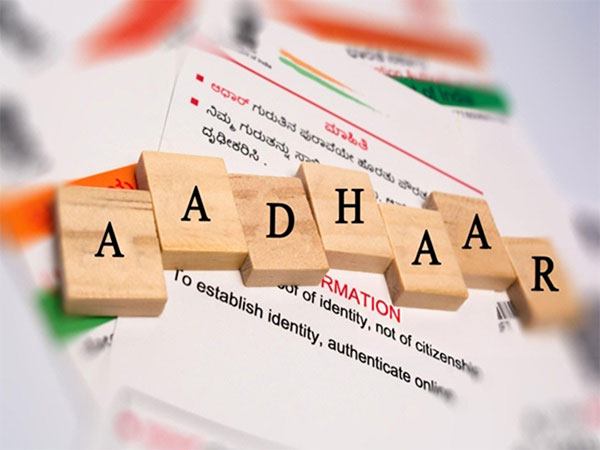Aadhaar Verification: The Comprehensive Guide to Digital Identity Authentication in India
May 14, 2025
PNN
New Delhi [India], May 14: In today's digital India, Aadhaar has emerged as the cornerstone of identity verification across government services, financial institutions, and businesses. This 12-digit unique identification number, issued by the Unique Identification Authority of India (UIDAI), has revolutionized how Indians establish their identity, access services, and complete essential transactions. In this comprehensive guide, we explore the nuances of Aadhaar verification, its importance, methods, security considerations, and how it integrates with other verification systems like Udyam verification.
Understanding Aadhaar Verification: The Backbone of Digital India
Aadhaar verification is the process of authenticating an individual's identity using their Aadhaar number and associated demographic or biometric information. Since its inception, Aadhaar has grown from a simple identification tool to becoming India's most trusted identity verification system, with over 1.3 billion enrollments.
This verification system functions as a critical enabler for:
* Government welfare scheme disbursements
* Opening bank accounts and completing KYC requirements
* Mobile SIM activation
* Accessing healthcare services
* Filing tax returns
* Registering businesses
* Applying for various licenses and certificates
The strength of Aadhaar verification lies in its ability to provide instant, paperless, and presence-less verification, reducing bureaucratic hurdles and minimizing fraud through its robust authentication mechanisms.
Types of Aadhaar Verification Methods
Aadhaar offers multiple verification methods to accommodate different needs and technological contexts:
1. Biometric Authentication: The most secure verification method uses fingerprints, iris scans, or facial recognition to confirm identity. This method requires specialized devices but offers the highest level of security.
2. One-Time Password (OTP) Verification: A common method that sends a temporary passcode to the registered mobile number. Simple yet effective, this method is widely used for online verifications.
3. Demographic Authentication: Verifies identity by matching demographic details like name, date of birth, and address with the Aadhaar database. This method is often used as a preliminary verification step.
4. QR Code Verification: Utilizes the QR code printed on Aadhaar cards to verify identity offline using the UIDAI's secure QR code reader app.
5. Virtual ID (VID): A 16-digit temporary, revocable ID that can be used in place of the Aadhaar number for verification purposes, enhancing privacy protection.
6. Aadhaar Paperless Offline e-KYC: Allows users to download an encrypted XML file from the UIDAI website that can be shared with service providers for verification without revealing the Aadhaar number.
The Legal Framework Supporting Aadhaar Verification
The Aadhaar verification system operates within a robust legal framework established by the Aadhaar Act of 2016 and subsequent amendments. Key legal aspects include:
* Voluntary use of Aadhaar for banking and telecom services
* Mandatory requirement for tax filings and welfare scheme benefits
* Strict regulations governing data sharing and privacy protection
* Penalties for unauthorized access or data breaches
* Provisions for opting out of Aadhaar linking for certain services
Security and Privacy Considerations in Aadhaar Verification
As with any national identification system, Aadhaar verification raises important security and privacy considerations:
Data Protection Measures
UIDAI employs end-to-end encryption, secured data vaults, and access controls to protect Aadhaar data. The central database, known as the Central Identities Data Repository (CIDR), operates with multiple security layers.
Privacy Safeguards
Recent enhancements include:
* Virtual IDs to mask the actual Aadhaar number
* Tokenization to prevent direct database queries
* Limited data sharing through the "need to know" principle
* Face authentication with liveness detection to prevent spoofing
User Consent Requirements
Aadhaar verification requires explicit user consent, and individuals have the right to know what information is being accessed and for what purpose.
* Aadhaar Verification for Businesses: For businesses, Aadhaar verification offers significant advantages in customer onboarding, employee verification, and compliance with regulatory requirements. Implementation options include:
* Aadhaar API Integration: Businesses can integrate Aadhaar verification into their systems through approved Authentication User Agencies (AUAs) or KYC User Agencies (KUAs).
* E-Sign Capabilities: Aadhaar-based electronic signatures enable paperless agreements and documentation, streamlining business processes.
* Customer Onboarding: Simplified KYC processes reduce onboarding time from days to minutes, improving customer experience while ensuring compliance.
* Fraud Prevention: Biometric verification significantly reduces identity fraud and document forgery risks in business transactions.
Aadhaar and Udyam Verification: Supporting India's MSME Ecosystem
An important intersection exists between Aadhaar verification and Udyam verification for India's micro, small, and medium enterprises (MSMEs). Udyam verification, the registration process for MSMEs under the Ministry of Micro, Small and Medium Enterprises, relies on Aadhaar authentication as a foundational step in the registration process.
When entrepreneurs apply for Udyam registration, they must first verify their identity using their Aadhaar number. This integration demonstrates how Aadhaar serves as the underlying identity infrastructure supporting other governmental verification systems and facilitating business formalization in India.
The Udyam verification process benefits from Aadhaar's robust authentication infrastructure, ensuring that only legitimate business owners can register their enterprises and access government benefits designed for MSMEs.
Best Practices for Secure Aadhaar Verification
To maximize security and efficiency when implementing or using Aadhaar verification:
For Individuals
* Never share your Aadhaar number or biometrics on unsecured platforms
* Use Virtual ID instead of your Aadhaar number when possible
* Regularly check your authentication history through the UIDAI website
* Keep your mobile number and email updated in the Aadhaar database
* Lock your biometrics when not actively using Aadhaar services
For Businesses
* Obtain proper certification and approvals from UIDAI before implementing verification
* Ensure compliance with all privacy regulations and data protection standards
* Implement proper data encryption and secure storage practices
* Train staff on proper verification procedures and privacy protocols
* Maintain detailed audit trails of all verification activities
Future Trends in Aadhaar Verification
As technology evolves, Aadhaar verification continues to advance. Emerging trends include:
* AI-Enhanced Verification: Machine learning algorithms are improving the accuracy and security of biometric matching
* Blockchain Integration: Experimental projects are exploring blockchain technology to enhance security and create immutable verification records.
* Multi-Modal Biometrics: Combining multiple biometric factors (fingerprint + face + voice) for enhanced security in high-value transactions.
* Contactless Authentication: Accelerated by the pandemic, contactless verification methods like facial recognition at a distance are gaining traction.
Challenges and Solutions in Aadhaar Verification
Despite its advantages, Aadhaar verification faces several challenges:
* Connectivity Issues: In rural areas with limited internet connectivity, offline verification methods provide an alternative solution.
* Technology Access: For those without smartphones, UIDAI has developed features like cardless authentication at banking correspondents.
* Biometric Exceptions: For individuals with worn fingerprints or certain disabilities, alternative verification pathways exist, including iris scanning or witness-based verification.
* Digital Literacy: Ongoing education initiatives help bridge the knowledge gap for those unfamiliar with digital verification processes.
Conclusion
Aadhaar verification represents a technological leap in identity management, creating a framework that balances convenience with security. As it continues to evolve, this system stands as a testament to India's digital transformation journey.
Whether you're an individual navigating daily transactions, a business streamlining KYC processes, or an entrepreneur pursuing Udyam verification for your MSME, understanding Aadhaar verification empowers you to leverage India's digital identity ecosystem effectively.
By embracing secure verification practices and staying informed about enhancements to the system, all stakeholders can contribute to realizing the full potential of Aadhaar as a foundational element of Digital India.
(ADVERTORIAL DISCLAIMER: The above press release has been provided by PNN. ANI will not be responsible in any way for the content of the same)








